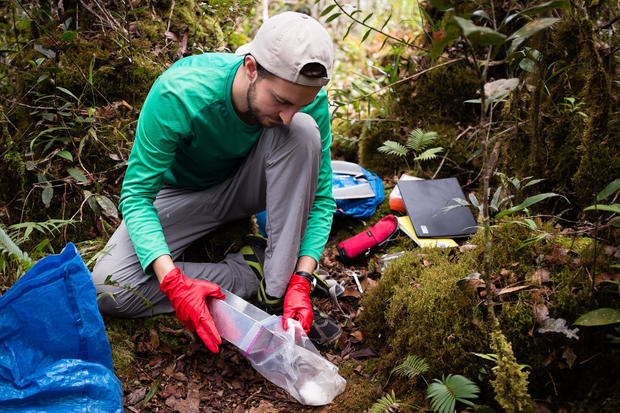They're furry. They're cute. They're 5 new species of hedgehogs, Smithsonian scientists confirmed.
They're small, furry and look like mice — but scientists say they're actually a new species of hedgehogs. An international collaboration of researchers led by Smithsonian scientists identified five new species of soft-furred hedgehogs, according to a study published in the Zoological Journal of the Linnean Society.
The scientists said they were able to use DNA analysis, as well as the animals' physical characteristics, to identify two entirely new species and elevate three hedgehog subspecies to the level of species. Distinguished by their furry bodies and pointy snouts, the little hedgehogs, known as lesser gymnures or Hylomys, are native to Southeast Asia.
There were previously only two known species of the group — now there are seven in total.

Lead researcher Arlo Hinckley first became intrigued with identifying new hedgehog species during his postdoctoral work, according to a statement released by the Smithsonian. He worked with the museum's curator of animals, Melissa Hawkins, and other collaborators to assemble 232 physical specimens and 85 tissue samples for genetic analysis from across the entire Hylomys group, enabling them to identify these new species.
Some of the samples were collected from field research — which with small mammals can be extremely difficult.
"Imagine trying to follow a 10 cm animal around to watch their behavior," Hawkins told CBS News.
Hinckley added, "As most small mammals, they are elusive. They will generally hide in their burrows, under roots or in tall grass if you get close to them."
Researchers used museum specimens from the natural history collections of the Smithsonian and the Academy of Natural Sciences of Drexel University in Philadelphia to fill in the gaps, the Smithsonian said.
"We were only able to identify these new hedgehogs thanks to museum staff that curated these specimens across countless decades and their original field collectors," Hinckley said in the statement. "By applying modern genomic techniques like we did many years after these hedgehogs were first collected, the next generation will be able to identify even more new species."
The next, and most fun part, the researchers said, was naming the new species.
"This is the first time I get to name them and describe them from scratch, so it was very exciting!" said Hinckley.
The two new species names are H. macarong, after a Vietnamese word for vampire, due to the male's long, fang-like incisors, and H. vorax, after a description from of its behavior from mammalogist Frederick Ulmer, according to the news release.
Hinckley said they "had a brainstorming session in which we came up with several silly names for H. vorax."

The three sub-species that were elevated are called H. dorsalis, H. maxi and H. peguensis.
Researchers don't exactly know how many species are yet left to be discovered.
"For mammals, where there are around 6,500 currently described species," Hawkins said. Hinckley pointed to a 2018 study that predicts "7,342 mammalian species will be recognized by 2050 and 8,590 by 2100."
Identifying new species can help conservationists protect habitats as well as identify the sources of new diseases that could affect humans, the researchers said.
- In:
- Smithsonian
- Science
Cara Tabachnick is a news editor and journalist at CBSNews.com. Cara began her career on the crime beat at Newsday. She has written for Marie Claire, The Washington Post, and The Wall Street Journal. She reports on justice and human rights issues. Contact her at cara.tabachnick@cbsinteractive.com
Disclaimer: The copyright of this article belongs to the original author. Reposting this article is solely for the purpose of information dissemination and does not constitute any investment advice. If there is any infringement, please contact us immediately. We will make corrections or deletions as necessary. Thank you.


